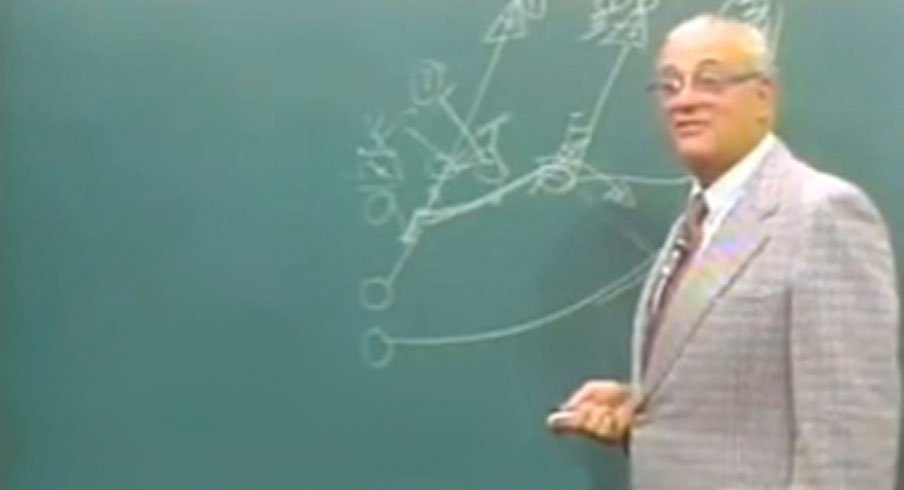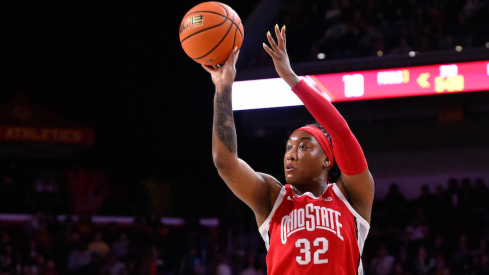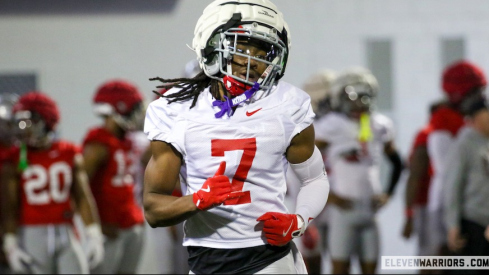Packaged plays – where a quarterback reads a defender to determine whether to hand off on a run play or pass – is one of the hottest concept in college football.
The packaged play has certainly gotten Urban Meyer's attention, as he enthusiastically explained the concept in an interview last week with CBS Sport's Jeremy Fowler. According to Meyer, packaged plays were probably used by 25 teams last year; a figure he expects to double in 2014. It is therefore helpful to understand the concept and how teams deploy packaged plays.
Trying to Make the Defense Wrong Every time
Two years ago I analyzed packaged plays in detail (see here, here, and here).
The packaged play is an outgrowth of the read concept in the run game. The goal is the same – constrain a defense from over committing edge and second level defenders against base run plays in an attempt by the defense to regain the arithmetic advantage against the offense.
As with read plays, the offensive line and running back execute the called run play. And with both, the quarterback reads a defender and makes a decision based upon how the defender reacts to the offense's initial movement.
But with a read run play, the quarterback reads the defender to determine whether he will give to the running back or keep the football to run. The packaged play adds an additional wrinkle – wide receivers running routes. Now, the quarterback will read the defender to determine whether he will give to the running back or throw the football to the wide receiver; often in the area vacated by the run-focused defender.
So in sum, with a packaged play, the offensive line and running backs execute a run play, the wide receivers run their called routes, and the quarterback determines whether to run or throw based upon his read.
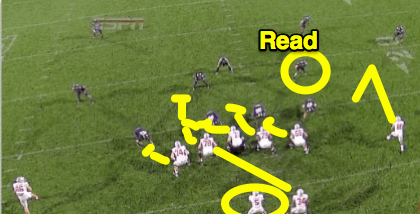
As Meyer notes, a college offense's ability to do so is enhanced by the fact that offensive linemen can go three yards down field on pass plays. (In fact, many offenses abuse this rule, with offensive linemen blocking linebackers at the second level as a pass is thrown).
The point of the packaged play is to confuse the defense and make them hesitant to flow to the football against the run action. And if the defense refuses to play their assignment, then the offense will take the easy yards via quick passes.
The Packaged Play's Growth
Package plays began by combining a bubble wide receiver screen with the zone read. Spread offenses sought ways to prevent a defense from cheating the slot defender down to account for the quarterback keep. So the quarterback was given the option to pull and throw to the wide receiver if he saw the slot receiver cheating into the box.
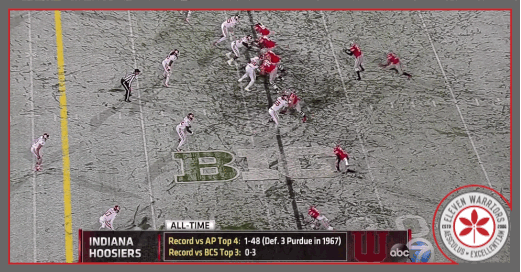
Gettin' Downfield
Offensive coaches soon expanded the concept. Coordinators found they could take advantage of the same principle of exploiting a defense cheating against the run game by throwing the football down field.
For instance, last year, Ohio State frequently combined their run plays with a backside hitch to a single outside receiver. If Braxton Miller saw the cornerback utilizing soft coverage he could pull and throw the football. Note that you can tell it is a packaged play by how the offensive line blocks power downfield.

Multiple Choice
But what Meyer diagrammed for Fowler is a more complicated packaged play, putting together a traditional zone read with a backside stick route. (H/T: CBS Sports).
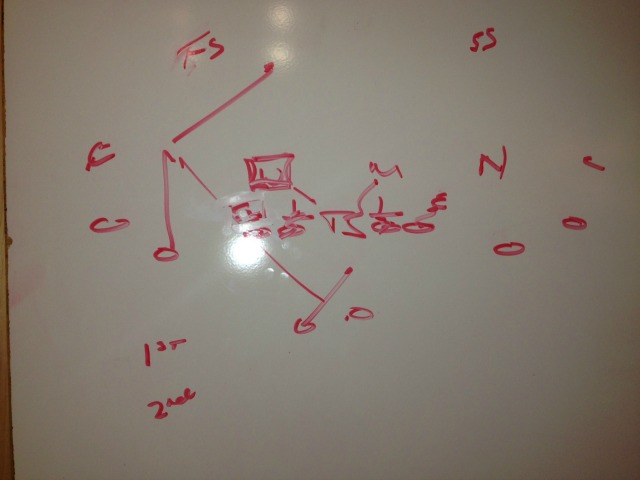
What makes it more complicated is that the quarterback has two reads. As described above, the running back and offensive line run inside zone. The slot receiver runs a stick route, working inside to six yards and settling outside the backside linebacker.
The quarterback has two reads, highlighted with squares above. The quarterback first reads the backside defensive end. This read functions just like Meyer's base inside zone read play. If the defensive end stays home the quarterback gives to the running back.
If the defensive end pursues the running back, the quarterback pulls the football, just as he would with zone read. But rather than simply keep, the quarterback will go to his second read, which is the backside linebacker. If the linebacker exercises his coverage responsibilities, the quarterback will keep. But if the linebacker comes down against the run, the quarterback will throw the stick in the area the linebacker vacated.
Putting it Together
The zone read/stick combination has been successfully utilized by Airraid disciples such as Dana Holgorsen and Tony Franklin. In fact, Franklin at Cal has taken the packaged play concept to the fullest extreme, packaging a passing route with every run play.
By necessity, packaged plays are limited to short hitch and stick routes. Although college offenses use (and in some cases abuse) the three yards downfield rule, the offensive linemen can only go downfield for so long and the run blocking is not designed for sustained pass protection. But putting this limitation aside, packaged plays provide spread offenses an effective method to stretch defenses horizontally and to prevent defenses from cheating defenders against the base run game.
Packaged plays thus mesh well with Meyer's core philosophy. It also serves a practical purpose. Meyer and offensive coordinator Tom Herman likely want to protect senior quarterback Miller from excessive runs and exposure to hits. Incorporating packaged plays as diagrammed by Meyer above allow the Buckeye offense to utilize the same offensive framework but constrain the defense with Miller throwing rather than running. So look for the Buckeye offense to increasingly rely upon packaged plays in 2014.
